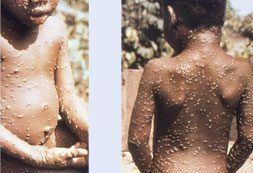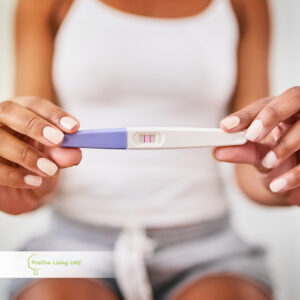What is monkeypox and how concerned should we be?


- Global health officials have expressed growing concern about an outbreak of the monkeypox virus in non-endemic countries across Europe, North America, and Australia.
- So, what is monkeypox and, as we begin to emerge from the Covid-19 global pandemic, should we be worried?
- Image credit: CDC
What is monkeypox and is it the same as chickenpox?
Monkeypox is described by the World Health Organisation (WHO) as a viral zoonosis (a virus transmitted to humans from animals) caused by the monkeypox virus. Although it has ‘pox’ in its name, monkeypox is not in the chickenpox (herpesvirus) family. Monkeypox is in fact in the same ‘variola’ family as the smallpox and the cowpox viruses.
Why is it called monkeypox?
The name monkeypox stems from when the disease was first discovered in laboratory monkeys. According to the Center for Disease Control (CDC) the virus was first found in 1958 in monkeys kept for research. Human cases of monkeypox were discovered in 1970 in the Democratic Republic of Congo (DRC) and until very recently the illness has been mostly limited to endemic countries in central and western Africa.
Should we be worried about monkeypox?
Multiple unrelated cases of monkeypox have recently been reported in non-endemic countries around the world, leaving health experts puzzled about the source of the infections.
Although monkeypox is related to smallpox the illness is not as severe. Experts say the strain of monkeypox identified in the recent international outbreak is a milder west African strain.
The World Health Organisation (WHO) describes monkeypox as a ‘self-limited disease’. Most people infected with the monkeypox virus recover within 2-4 weeks and fatalities are rare.
How contagious is monkeypox?
The monkeypox virus isn’t as highly infectious as the SARS-CoV-2 virus responsible for the Covid-19 pandemic.
Monkeypox is spread by prolonged close contact with an infected human or animal. The virus can enter the body via respiratory droplets, broken skin, and the exchange of bodily fluids. The virus can also be transmitted on recently contaminated surfaces.
Health experts are increasingly looking at sexual transmission as a primary cause for the recent rapid spread of monkeypox in non-endemic countries. The WHO has called for further research into the theory that sexual contact is speeding transmission of the virus.
What are the signs and symptoms of monkeypox?
Monkeypox symptoms are milder than the symptoms of smallpox. Monkeypox typically begins with headache, fever, muscle aches, fatigue, and swollen lymph nodes (lymphadenopathy). According to the CDC, the incubation period from infection to early symptoms is typically 7-14 days, but in some cases ranges from 5-21 days.
Around 1-3 days after the fever arrives the ‘pox’ rash will start to appear on the infected person’s face and then spread to other parts of the body. The rash goes through stages similar to the chickenpox rash (macules, papules, vesicles, pustules, crusts) before eventually forming scabs and falling off. As with chickenpox, a person with monkeypox is contagious until all the lesions are crusted over.
Can monkeypox be treated?
According to the CDC there is currently no approved treatment for the monkeypox infection. That said, in the United States the smallpox vaccine (Imvamune or Imvanex) and antivirals used to treat smallpox are recommended for the purposes of controlling a monkeypox outbreak.
___
Nabta is reshaping women’s healthcare. We support women with their personal health journeys, from everyday wellbeing to the uniquely female experiences of fertility, pregnancy, and menopause. You can track your menstrual cycle and get personalised support by using the Nabta app.
Get in touch if you have any questions about this article or any aspect of women’s health. We’re here for you.












































